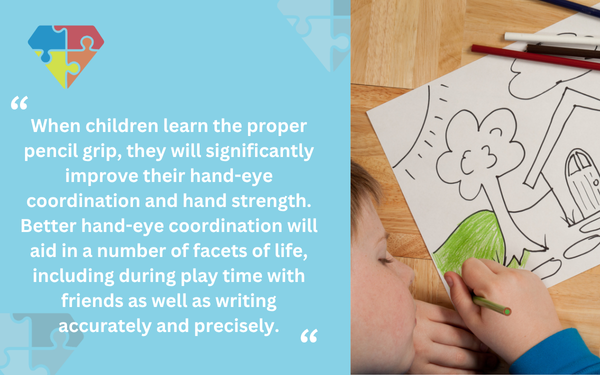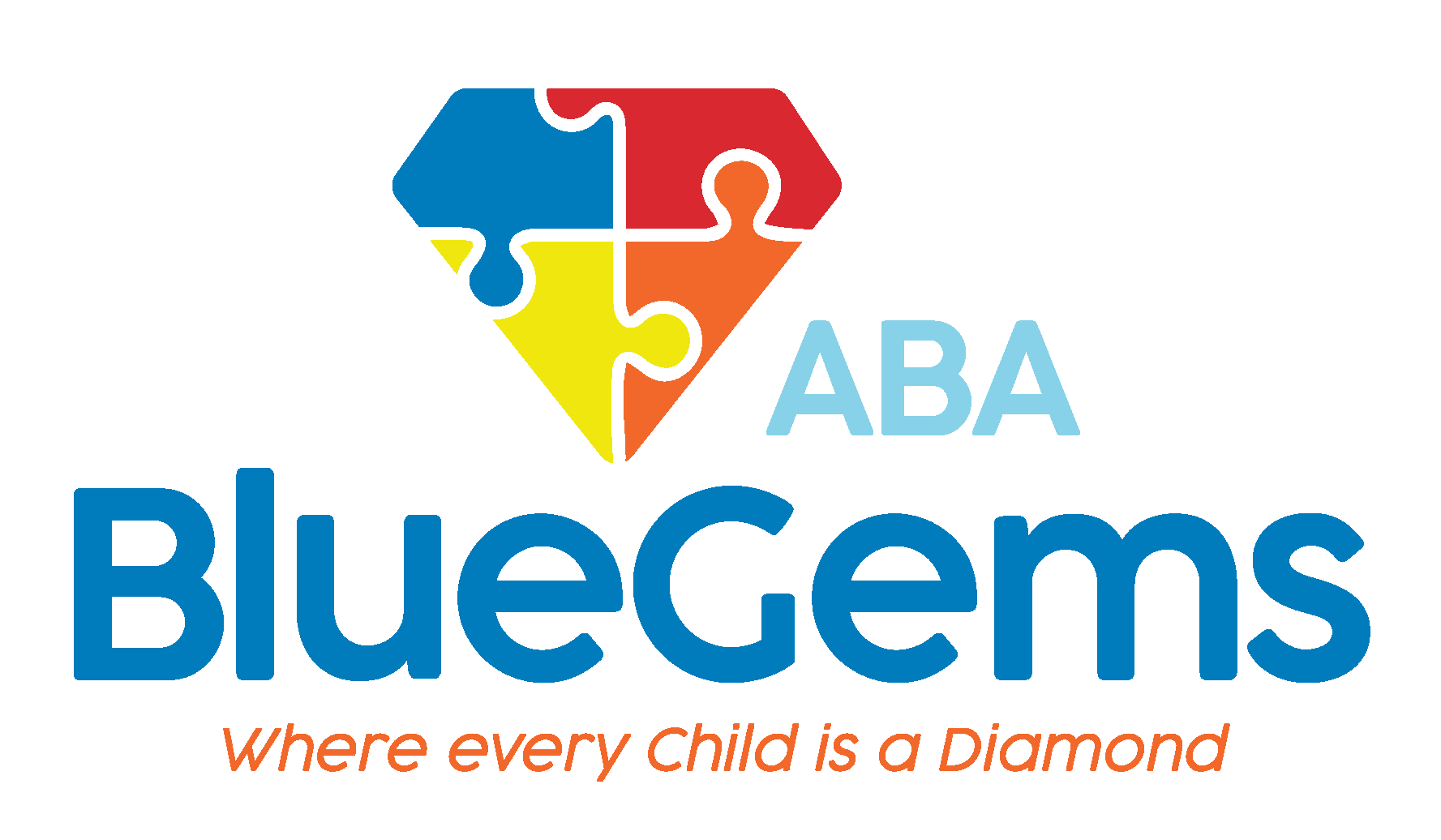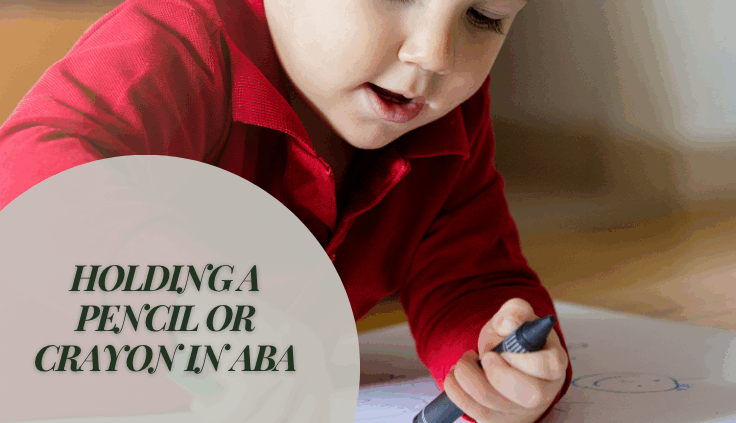Holding a Pencil or Crayon in ABA
Getting a child to learn how to properly hold a pencil is an important developmental milestone. It’s something that a child must figure out first so they can hone other fine motor skills such as drawing and writing precisely.
It’s so important, in fact, that it even has a name — pencil grip.
It’s common for children to struggle with pencil grip at first, but children who have autism spectrum disorder (ASD) might struggle even more. Luckily, there are ways in which applied behavior analysis, or ABA therapy, can help.
In this article, we’ll discuss some of the ways in which ABA therapy teaches children with autism to hold a pencil or crayon.
Table Of Contents
Why is Pencil Grip So Important?
Mastering pencil grip is a major part of a child’s development. It affects much more than just their ability to write clearly.
When children learn the proper pencil grip, they will significantly improve their hand-eye coordination and hand strength. Better hand-eye coordination will aid in a number of facets of life, including during play time with friends as well as writing accurately and precisely.

Improved hand strength allows children to write for longer periods of time without becoming fatigued, which in turn promotes improved focus and also academic performance.
When children can’t master pencil grip, it can result in them having trouble forming shapes and letters. Over time, it could lead to other poor writing habits, which could be much harder to correct later in life.
How Does ABA Therapy Help Children with Autism Master Pencil Grip?
There are a number of strategies that ABA therapy follows to help children hold a pencil or crayon properly, and to master pencil grip. The first thing that has to be taught is what “pencil grip” is.
Therapists can demonstrate this to patients by showing them how they can form a tripod on the pencil with their middle finger, index finger and thumb. They might use visual aids such as pictures to show how it’s done, they might model the action for them, and they might even do hand-over-hand activities to physically manipulate their fingers into place.
ABA therapists will often teach pencil grip like they do other skills — by breaking it down into simpler, more manageable steps following the concepts of Discrete Trial Training (DTT).
The placement of the fingers and thumbs will be the first step that therapists will focus on. They will teach that in some of the ways mentioned, and incorporate positive reinforcement as the child successfully responds to prompts and places their fingers properly around the pencil or crayon.
From there, the therapist may move onto the next step, which is using a pencil grip to manipulate the pencil or crayon to write on a piece of paper. This involves showing the child how to place the pencil or crayon properly on the paper at the right angle, and then holding the paper with their other hand to keep it still.
Are There Other Tools or Strategies That Can Help?
ABA therapists may use other tools and strategies to help teach children how to hold a pencil or crayon. If they’re advanced enough with their fine motor skills but need a little boost, there are tools called pencil grippers that can be implemented.
They will help the child grip the pencil or crayon better, thereby improving their fine motor skills and helping them with handwriting.
Other effective approaches include improving motor skills in other ways. Activities that include threading and lacing — such as making a creative necklace with beads — can help as well.
These activities are not only fun for the child, but they help them improve their fine motor skills, dexterity and hand strength, all of which can lead to them mastering the correct pencil grip.
Blue Gems ABA Can Help Children with ASD Hold a Pencil or Crayon
Learning how to hold a pencil or crayon and eventually mastering the proper pencil grip are essential skills for children and actually are considered a developmental milestone. Children with autism may need extra support in mastering this skill, though, as they often face challenges with fine motor skills.
At Blue Gems ABA, our team of therapists works hard with children on the autism spectrum to help them improve their fine motor skills, hand-eye coordination and hand strength so they can master skills such as the proper pencil grip. This leads to more successful educational outcomes, which ultimately enable the child to learn and live more independently.
To learn more, please contact us today.




